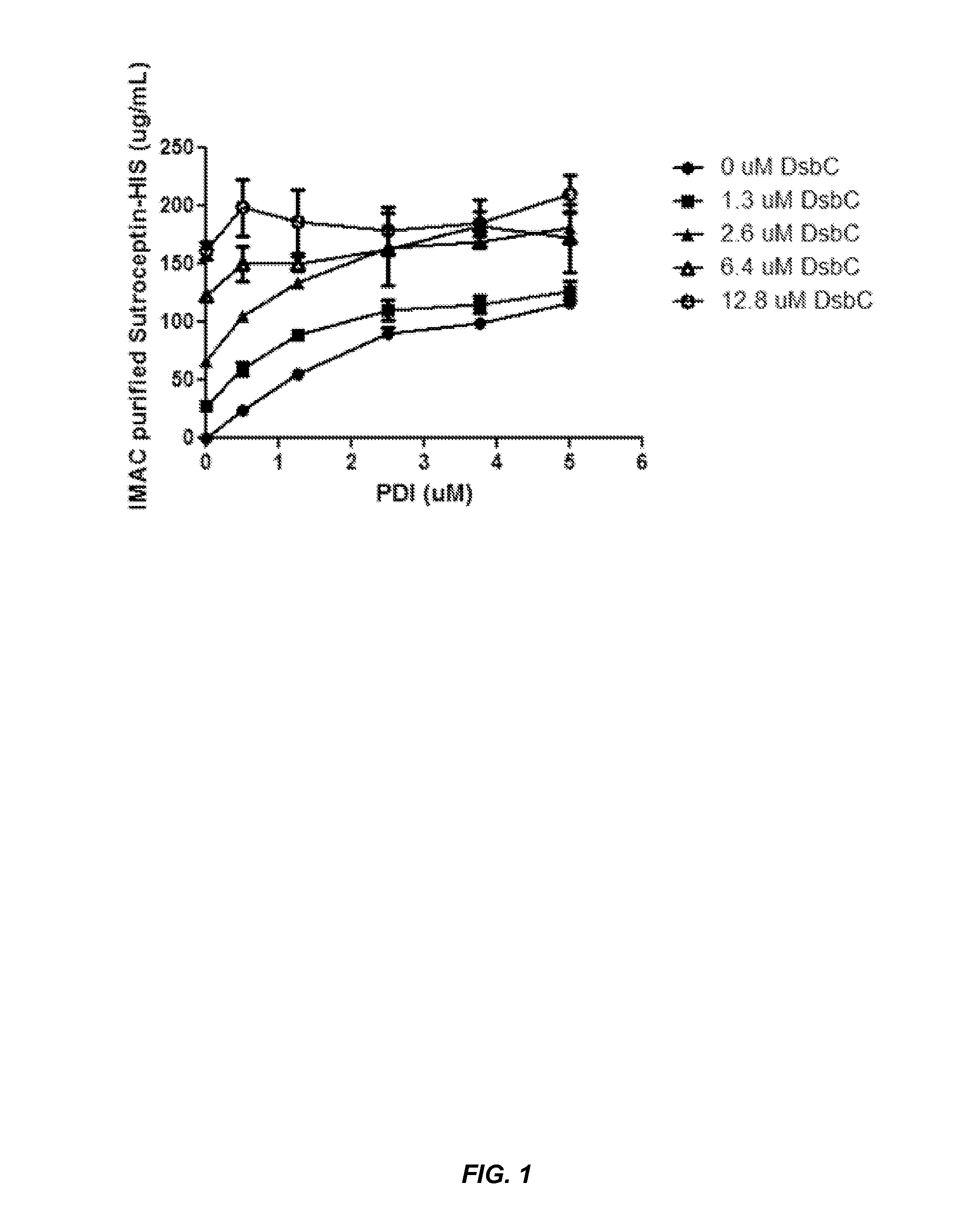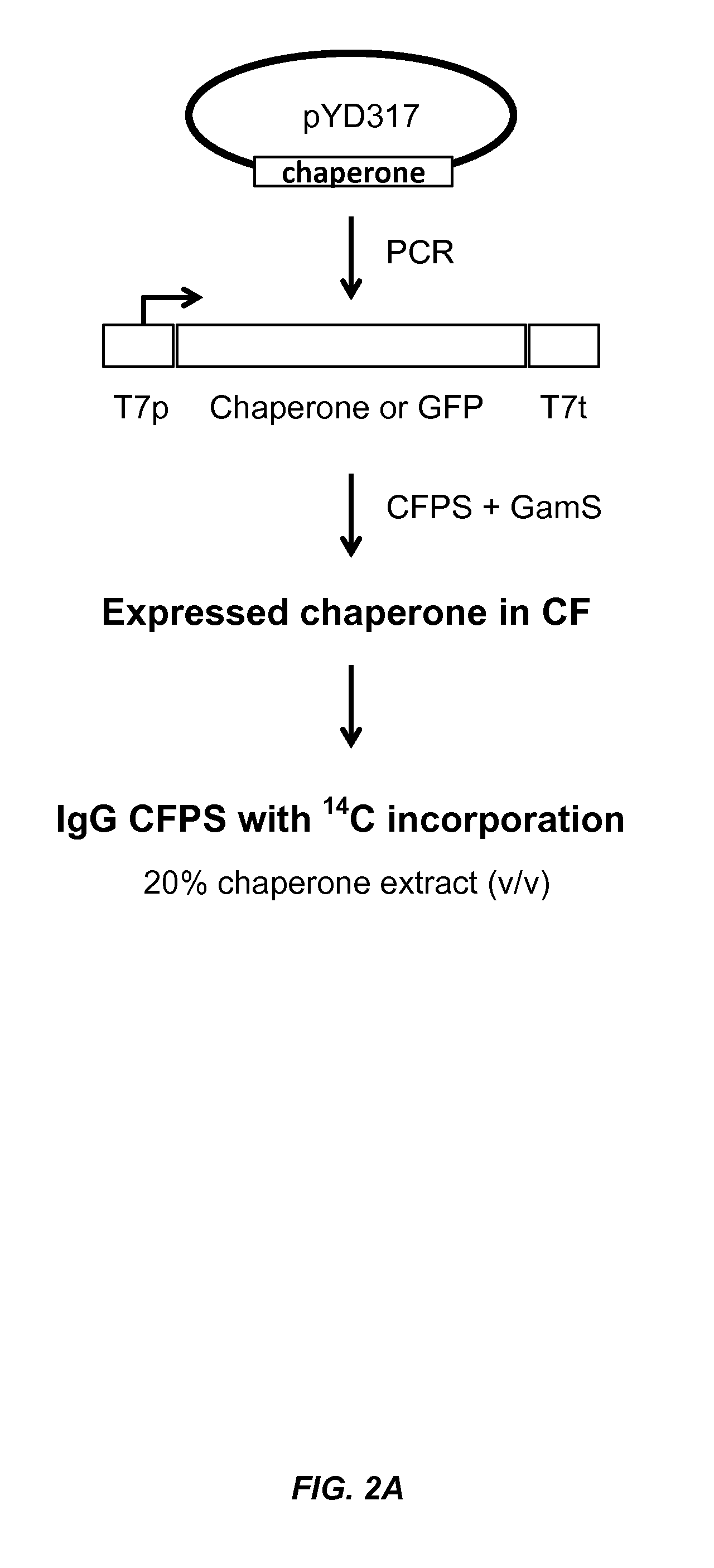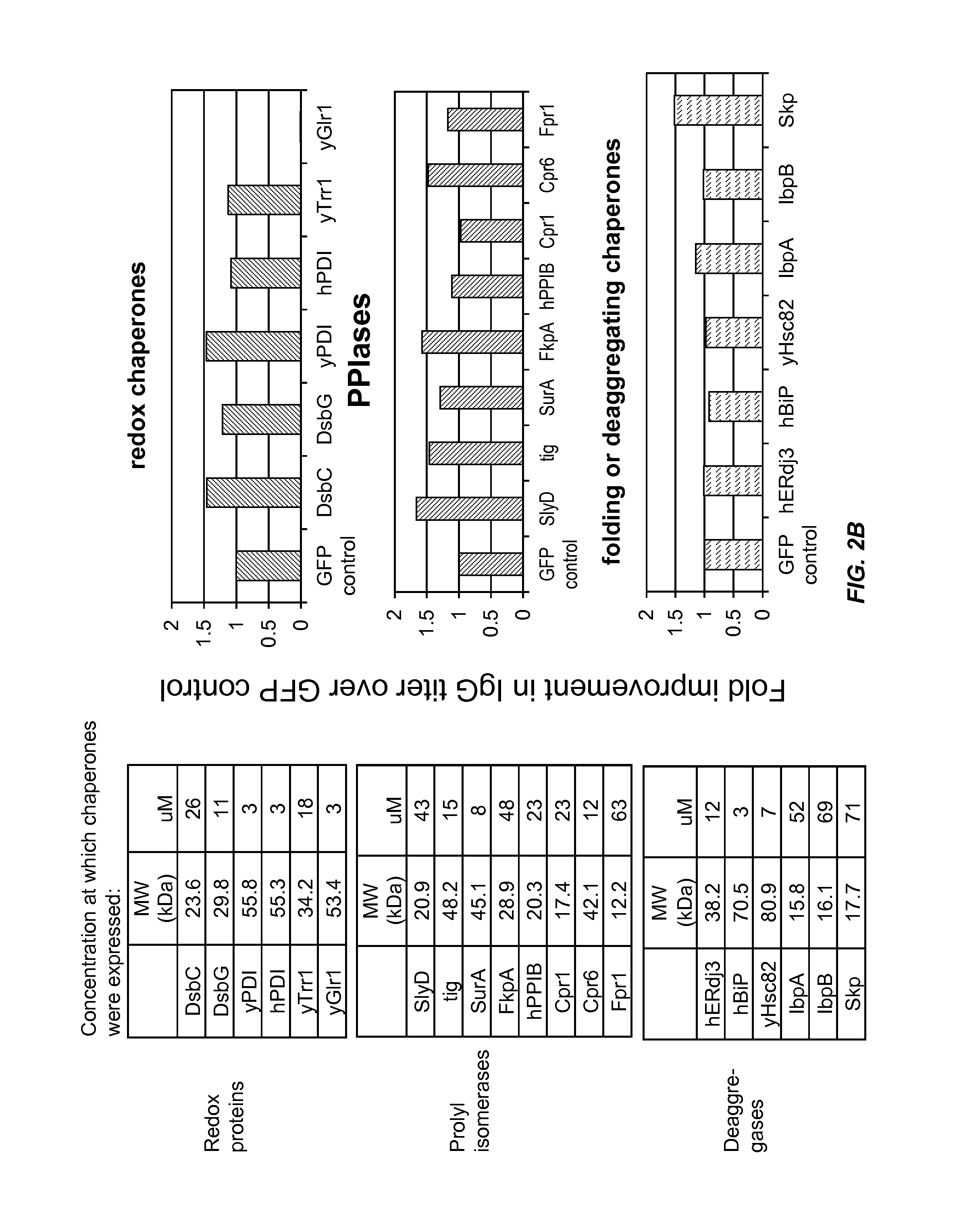Expression of biologically active proteins in a bacterial cell-free synthesis system using bacterial cells transformed to exhibit elevated levels of chaperone expression
a bacterial cell-free synthesis and protein technology, applied in biochemistry, biochemical equipment and processes, fermentation, etc., can solve the problems of improper folding and loss of biological activity, slow growth rate of bacteria, and low protein synthesizing activity in extracts prepared, so as to improve the expression of biological activity
- Summary
- Abstract
- Description
- Claims
- Application Information
AI Technical Summary
Benefits of technology
Problems solved by technology
Method used
Image
Examples
example 1
[0149]This example demonstrates that chaperone proteins expressed by a bacterial cell free protein synthesis system increase the amount of properly assembled IgG expressed by the cell free protein synthesis system, and that the combination of a bacterial PDI and a PPI acted synergistically to increase the amount of properly assembled IgG.
[0150]Engineering of a bacterial endoplasmic reticulum for the rapid expression of immunoglobulin proteins.
[0151]Materials and Methods:
[0152]Small-scale cell-free expression. 100 μl cell-free protein synthesis reactions were run at 30° C. for 12 hr in a 96-well microtiter plate at 650 rpm in a VWR Thermomixer in the presence of 10 μg / mL DNA (2.5 μg / mL trastuzumab light chain DNA, 7.5 μg / mL trastuzumab heavy chain DNA in the expression vector pYD317). Cell-free extracts were treated with 50 μM iodoacetamide for 30 min at RT (20° C.) and added to a premix of components. The final concentration in the protein synthesis reaction was 30% cell extract (v / ...
example 2
[0164]This example demonstrates that overexpression of exogenous protein chaperones in bacterial strains used to prepare cell extracts does not inhibit the production of a protein of interest such as GMCSF.
[0165]Strain Descriptions:
[0166]SBDG028: SBJY001+pACYC 2× DsbC+ΔRF1
[0167]SBDG031: SBJY001+pACYC 2× DsbC
[0168]SBDG044: SBJY001+pACYC 2× FkpA
[0169]SBDG049: SBJY001+pACYC 2× FkpA-6×His
[0170]Cell Extract Preparation:
[0171]Extracts from E. coli strains SBDG028, SBDG031, SBDG044 and SBDG049 were prepared essentially as described in Zawada et al., Biotechnology and Bioengineering Vol. 108, No. 7, July 2011.
[0172]GMCSF CFPS Reaction
[0173]The cell-free reaction procedure for GMCSF protein production was performed as described in Zawada et al. Biotechnology and Bioengineering Vol. 108, No. 7, July 2011, which is incorporated by reference herein in its entirety.
[0174]FIG. 7 shows the amount of GMCSF protein produced by the CFPS in extracts from the indicated strains that overexpress DsbC or ...
example 3
[0175]This example demonstrates that bacterial cells overexpressing protein chaperones have similar growth rates as bacteria that do not overexpress protein chaperones.
[0176]Methods: Bacterial strains were transformed with recombinant plasmids that express one (1×) or two (2×) copies DsbC and FkpA, as described in Example 1. These strains were grown to log phase lysed for the production of cell-free extract. The growth rates (doubling times) for the strains were determined, and the amount of protein chaperone produced by the bacteria strains was quantified using Western analysis and / or ELISA.
[0177]To determine the intracellular concentration of the expressed protein chaperones, the periplasm of shake flask grown cells was lysed using osmotic shock. The periplasmic lysate was separated by gel electrophoresis with standards of known DsbC concentration. Densitometry was used to compare the intensity of the standard DsbC bands to the intensity of the bands in the periplasmic lysate. The...
PUM
| Property | Measurement | Unit |
|---|---|---|
| concentration | aaaaa | aaaaa |
| intracellular concentration | aaaaa | aaaaa |
| concentration | aaaaa | aaaaa |
Abstract
Description
Claims
Application Information
 Login to View More
Login to View More - R&D
- Intellectual Property
- Life Sciences
- Materials
- Tech Scout
- Unparalleled Data Quality
- Higher Quality Content
- 60% Fewer Hallucinations
Browse by: Latest US Patents, China's latest patents, Technical Efficacy Thesaurus, Application Domain, Technology Topic, Popular Technical Reports.
© 2025 PatSnap. All rights reserved.Legal|Privacy policy|Modern Slavery Act Transparency Statement|Sitemap|About US| Contact US: help@patsnap.com



